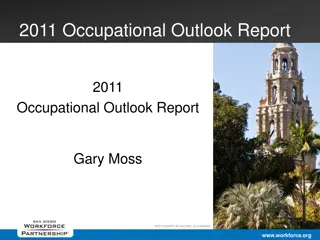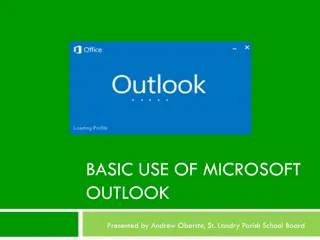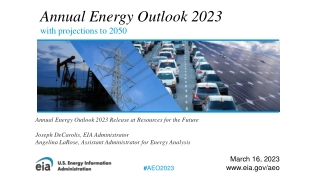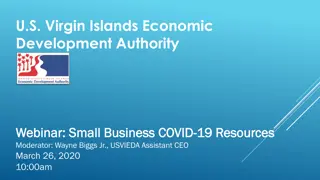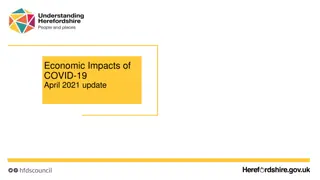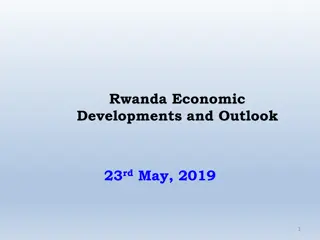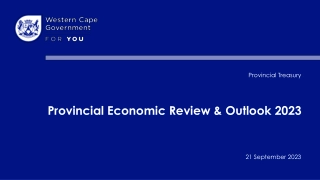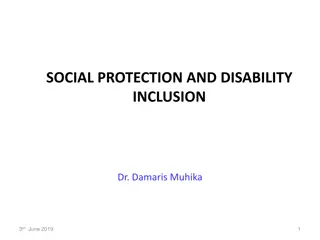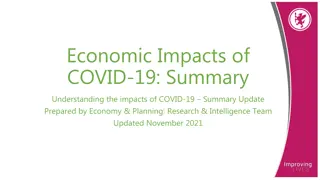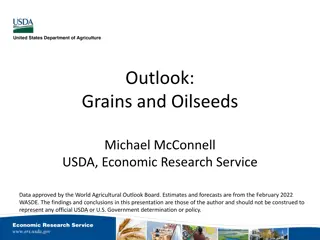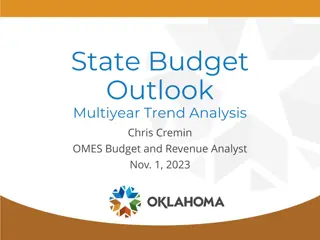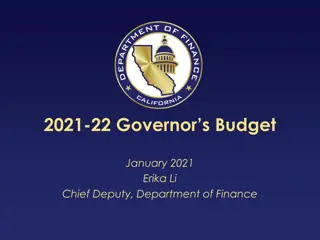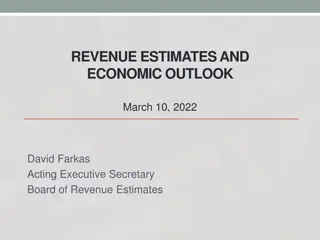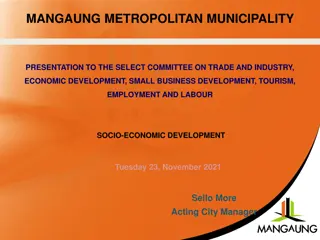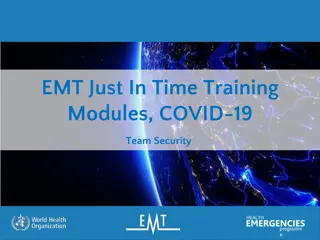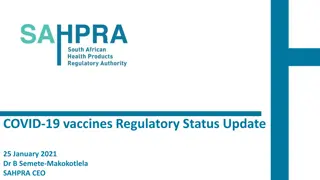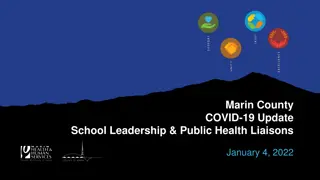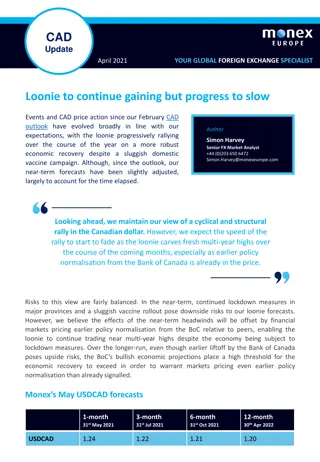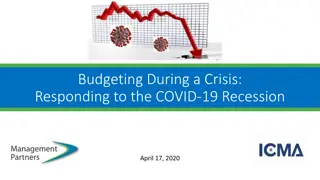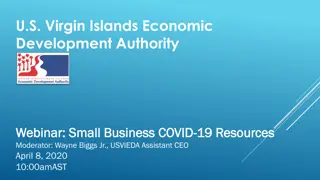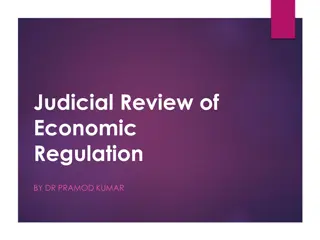Implications of COVID-19 for Social Security: US Update and Economic Outlook
The presentation discusses the impact of the COVID-19 epidemic on the US economy, emphasizing the role of virus spread in economic activity decline. It highlights the need for controlling the virus for a successful recovery rather than relying solely on lifting shutdown orders. Various papers and charts are referenced to illustrate the economic consequences and policy implications associated with the pandemic.
Download Presentation

Please find below an Image/Link to download the presentation.
The content on the website is provided AS IS for your information and personal use only. It may not be sold, licensed, or shared on other websites without obtaining consent from the author. Download presentation by click this link. If you encounter any issues during the download, it is possible that the publisher has removed the file from their server.
E N D
Presentation Transcript
NBER Panel Discussion: Implications of COVID-19 for Social Security COVID-19 Epidemic: US Update and Economic Outlook Jim Stock Department of Economics, Harvard University Outline 1. Activity and official orders brief review 2. Public health data as of this morning 3. Policy dependence of pre-vaccine economy simulations 4. What will the recovery look like? 1 July 22, 2020
The decline in activity is largely an endogenous response to the spread of the virus There is now a consensus that the low levels of economic activity are largely an endogenous response to the spread of the virus, and threat of infection and deaths, not the result of business closure orders. There are exceptions where orders bind School closing/reopenings Closings keep bars closed, but reopenings don t ensure customers return The implication is that a recovery hinges on controlling the virus, not merely lifting shutdown orders Selected papers (US data) Bartik, Bertrand, Lin, Rothstein, and Unrath (2020) (hours, mobility) Chetty, Friedman, Hendren, Stepner et al (2020) (spending) Coibion, Gorodnichenko, Weber (2020) (Nielsen spending) Goolsbee and Syverson (2020) (business foot traffic Safegraph) Gupta et al (2020a, b, c) (mobility, employment) Kahn, Lange, Wiczer (2020) (vacancies, UI claims) Lin and Meissner (2020) (cases, employment) And a couple of charts: 2
The decline in activity is largely an endogenous response to the spread of the virus Spending and official re-openings Source: Chetty et al. (2020)) 3
Cases and deaths through July 21 New York, New Jersey, Connecticut, Massachusetts Rest of U.S. 4
Estimates of Reffective(t) = R0(t) x (S/N) Source: Rt.live (updated 7/21/20) 1 + ln dt d D = + eff 1 R Nonparametric: Estimates of Reffective Rt.Live (7/22/20) F-V & Jones (6/21/20) 5-age national SIR MA 1.05 0.78 CA 1.00 1.01 AZ 0.97 1.17 TX 1.01 1.08 FL 1.00 1.08 6 Source: Baqaee, Farhi, Mina, & Stock (2020), updated 7/10/10
Policy dependence of pr-vaccine economy: Simulation evidence Unemployment rate Weekly deaths Source: Baqaee, Farhi, Mina, Stock (2020) Source: Baqaee, Farhi, Mina, Stock (2020) Relaxed social distancing, limited masks Close schools, economic shutdown Masks, social distancing, enhanced protections for elderly Open schools, no economic shutdown Smart containment, not deaths v. jobs Unlike most economic problems, we have more instruments than targets The economic lockdown tool is by itself not especially effective, and very costly Masks and personal distancing Testing & isolation Support protections for elderly; etc. 7
The post-vaccine recovery: Time series evidence How different is this recession, really? Two time series exercises: 1. Can the weekly data tell us anything about the transition from fast to slow dynamics? Fit two-factor (fast and slow) model to weekly data 1. Have monthly co-movements changed? Fit 5-factor model to monthly US data set (81 series) through December 2019 Compute the five factors using the pre-COVID factor loadings ( old factors ) How well do the old factors track the current co-movements The temporal dynamics of this recession are clearly different this exercise tracks asks whether the co-movements are different 9
The post-vaccine recovery: historically, slow dynamic FRED Graph -0.9pp/yr -0.7pp/yr -0.5pp/yr -0.5pp/yr 10
The post-vaccine recovery: Transition from fast to slow dynamics? Fast and slow factors in weekly data: FRB NY-Dallas Weekly Economic Index 11
The post-vaccine recovery: Stability of monthly comovements? Industrial production 12
The post-vaccine recovery: Stability of monthly comovements? Retail sales 13
The post-vaccine recovery: Stability of monthly comovements? Payroll employment 14
The post-vaccine recovery: Stability of monthly comovements? Unemployment, 5-14 weeks 15
The post-vaccine recovery: Stability of monthly comovements? Unemployment, 15 26 weeks 16
The post-vaccine recovery: Stability of monthly comovements? Unemployment, 27+ weeks 17
The post-vaccine recovery: Concluding remarks There has been a lot of speculation on long-term consequences of the COVID-19 recession Productivity growth Labor force participation Major sectoral shifts? Structure of the workplace? To me, this speculation seems premature 18
Cases and deaths through July 10 United States 20


